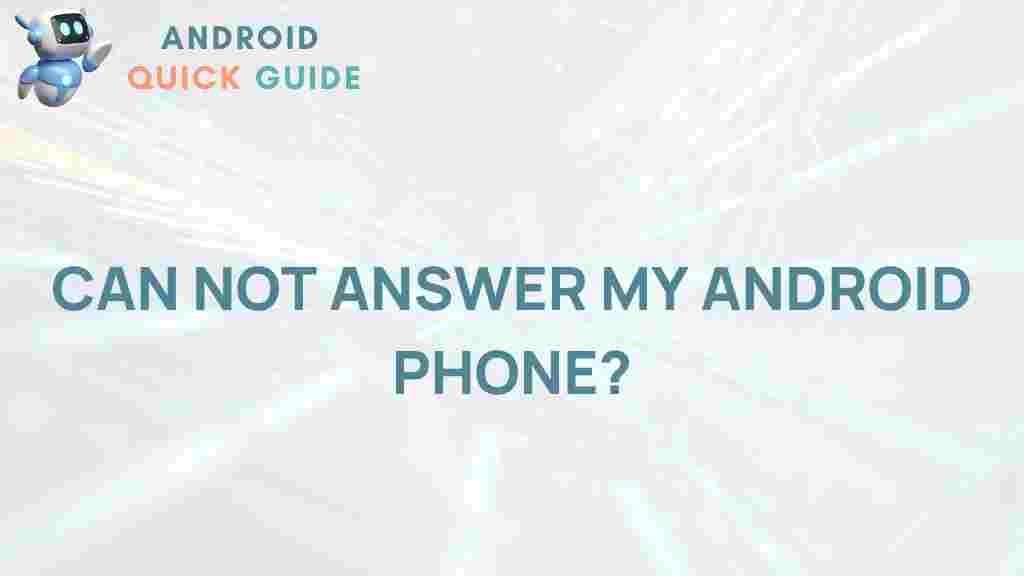In today’s world, smartphones are essential, and an Android phone is one of the most popular choices. With such a broad range of models and features, understanding how to navigate even the most basic functions, like answering calls, can sometimes feel overwhelming. This guide will demystify common Android phone call features and help you become a pro in no time.
How to Answer Calls on an Android Phone
Every Android phone model has unique features, but the core method of answering calls remains largely consistent. Learning how to answer calls properly can prevent missed communications and reduce confusion, especially if you’re adjusting to a new device.
Step-by-Step Guide to Answering Calls
When you receive a call on your Android phone, a few simple steps will ensure you can answer smoothly:
- Swipe to Answer: When a call comes in, a notification appears with a swipe button, typically green. Swipe up or to the right to answer.
- Decline Option: To reject a call, swipe the red button down or to the left. This will send the caller directly to voicemail.
- Quick Response: Many Android phones also allow you to send a quick text message response. Tap “Message” and choose a pre-set reply or type your own.
For users with specific accessibility needs, there are options like “Answer with Voice Commands” or even “Answer with a Physical Button” available on some models. These settings can be customized in your phone’s settings under Accessibility.
Advanced Call Answering Features
Android phones come with several advanced call features designed to enhance your experience and make call handling more convenient. Let’s explore these below:
Call Waiting
With Call Waiting, you can handle multiple calls without missing any. If you’re on a call and another call comes in, you’ll see an option to put the current call on hold while you answer the new one. Here’s how to manage it:
- When a second call comes in, tap the “Hold & Accept” option.
- To switch between calls, select “Swap” or a similar option.
This feature is incredibly useful if you need to juggle personal and work calls. If Call Waiting isn’t activated on your Android phone, check the Settings to turn it on.
Caller ID and Spam Protection
Most Android phones come equipped with a Caller ID and spam protection feature, helping you filter unwanted calls:
- Caller ID: Shows the contact name or the number if it’s not saved in your phone.
- Spam Protection: Flags potential spam calls so you can avoid answering them. This is especially helpful in avoiding robocalls.
To enable this, go to Settings > Caller ID & Spam and toggle the options. For more on protecting your phone, consider checking out our guide on security tips for Android devices.
Customizing Call Settings on Your Android Phone
Customizing your call settings can make your Android phone even more convenient. From changing the ringtone to enabling Do Not Disturb during meetings, there are various ways to make calls work for you.
Setting Up a Custom Ringtone
Want to identify who’s calling without checking your screen? You can set different ringtones for different contacts:
- Open the Contacts app.
- Select a contact you want to personalize.
- Tap “Ringtone” and choose a new sound.
Now, when that contact calls, you’ll hear the customized ringtone.
Do Not Disturb Mode
Do Not Disturb mode can be essential for avoiding distractions. When enabled, it silences calls, messages, and notifications:
- Swipe down to access the Quick Settings panel.
- Tap Do Not Disturb to turn it on or customize settings by tapping and holding the icon.
In the settings, you can allow calls from specific contacts to bypass this feature. This is helpful for emergency contacts.
Troubleshooting Common Call Answering Issues
Even with the right steps, Android phone users sometimes face issues with answering calls. Here are some quick solutions to common problems.
Problem 1: Can’t Answer the Phone with a Swipe
If you’re unable to answer calls using the swipe feature, the issue could be due to a software bug or sensitivity settings. Try these fixes:
- Restart the Phone: A simple restart can often fix temporary glitches.
- Clean the Screen: Ensure your screen is clean as dirt or grease can affect responsiveness.
- Update Software: Go to Settings > Software Update to check for any available updates.
Problem 2: Call Screen Freezes
Sometimes, the call screen may freeze, making it impossible to answer. Here’s what you can do:
- Force Stop the Phone App: Go to Settings > Apps > Phone and tap “Force Stop”.
- Clear Cache: In the same menu, select “Storage” and clear the cache to remove temporary files.
If the issue persists, it could be time to contact support or visit a repair center.
Problem 3: Calls Going Directly to Voicemail
If calls are skipping the ring and going straight to voicemail, Do Not Disturb or call forwarding settings may be responsible:
- Check Do Not Disturb: Make sure this mode is turned off.
- Disable Call Forwarding: Go to Settings > Calls > Call Forwarding and ensure no numbers are listed.
Conclusion
Mastering call answering on an Android phone doesn’t have to be challenging. By following these steps, customizing your settings, and understanding how to troubleshoot common issues, you can enhance your phone experience significantly. Whether you’re a seasoned Android user or new to smartphones, these tips will keep you connected and ready for every call that comes your way.
This article is in the category Guides & Tutorials and created by AndroidQuickGuide Team
